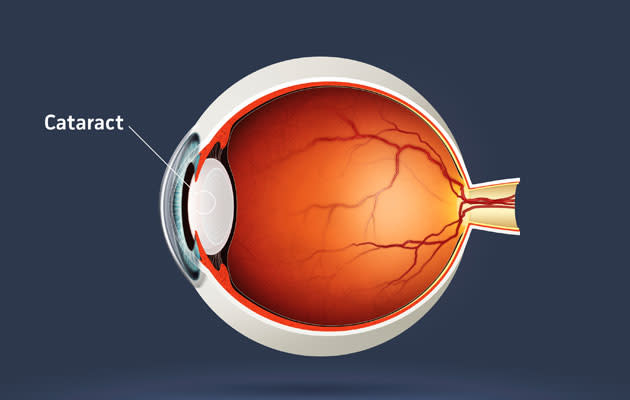How to Keep an Eye on Diabetes & Cataracts
How to Keep an Eye on Diabetes & Cataracts

People with diabetes are especially prone to cataracts.
A cataract generally does not cause eye irritation nor pain, but it is the most common cause of blindness in the world. Although anyone can get a cataract, people with diabetes are especially prone to it and other eye conditions like diabetic retinopathy and glaucoma.
A person with diabetes can develop a cataract at an early age, and the condition is likely to progress more rapidly in diabetics than in people who don’t have diabetes. This is because high blood sugar in diabetes can cause changes in your eye, such as swelling or clouding of the lens, which can affect your ability to see. Fortunately, a cataract is treatable with surgery.
Related article: 5 things every Singaporean should know about diabetes
What is a cataract?
A cataract is a condition in which the lens of your eye turns cloudy, preventing sufficient light from entering your eye, therefore reducing vision. Eventually, this deterioration in vision will interfere with your daily activities, such as reading or driving a car (particularly at night).
“Most cataracts develop slowly and you may not notice it in the earlier stages of the condition. However, your vision will be affected as the clouding progresses,” says Professor Chee Soon Phaik, Head and Senior Consultant, Cataract Service, Singapore National Eye Centre (SNEC), a member of the SingHealth group.
Are cataracts dangerous?
Cataracts are not dangerous to eye health unless they become completely white. This condition, called an overripe or hypermature cataract, can cause raised eye pressure and present suddenly with redness and pain in the eye, as well as headaches. If a cataract causes inflammation and raised eye pressure, it will need to be removed.
Causes of cataracts and its risk factors
While cataract formation is associated with ageing and is common in the elderly, diabetics are particularly susceptible to this eye condition. As with other conditions associated with diabetes, your risk of developing a cataract is reduced if you maintain good control of your blood sugar level.
Other causes and risk factors of cataract include:
Prolonged UV light exposure
Prolonged use of corticosteroid drugs
Smoking
Prior eye injury or inflammation: This is particularly true of young people in whom cataract can be associated with inflammatory eye disease, or due to injury
Prior eye surgery
Related article: Top 10 diet tips for people with diabetes
Symptoms of cataracts
If you have diabetes, the first sign that you may have a cataract is clouded, blurred or dim vision that cannot be corrected with the usual corrective visual aids such as glasses.
Other signs and symptoms of cataract include:
Difficulty seeing at night that worsens with time
Sensitivity to light and glare
Seeing halos around lights
The need for bright light when reading and performing other tasks
Fading or yellowing of colours
Double vision in one eye
Related article: 5 tips to prevent cataracts
Get more health tips at HealthXchange.com.sg and sign up for our FREE e-newsletter.
Article written with expert input from the Cataract Service, Singapore National Eye Centre (SNEC), a member of the SingHealth group, for HealthXchange.
Articles on HealthXchange.com.sg are meant for informational purposes only and cannot replace professional surgical, medical or health advice, examination, diagnosis, or treatment.

